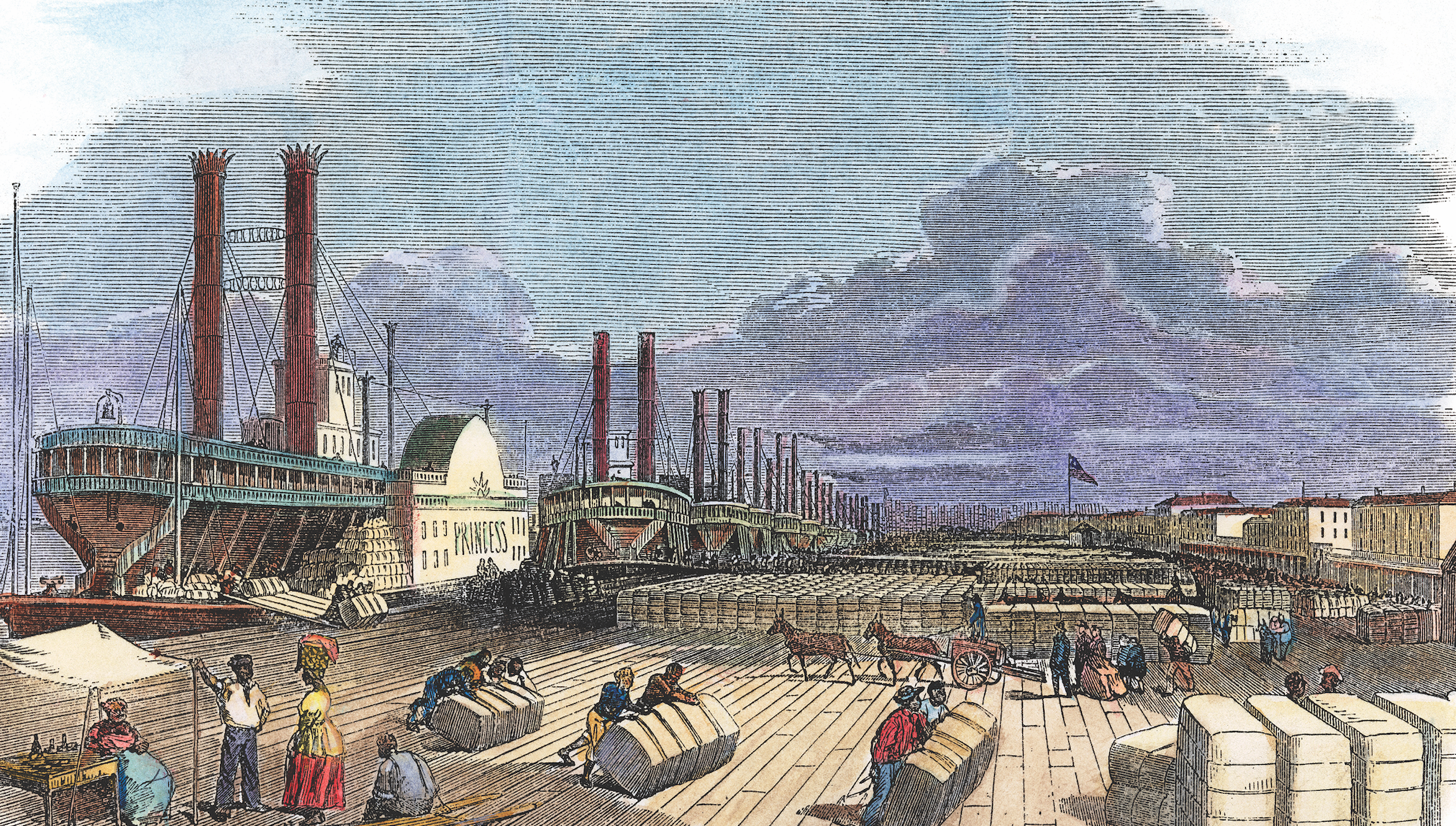 In his 2020 book, Colossal Ambitions: Confederate Planning for a Post-Civil War World (University of Virginia Press, $45), Adrian Brettle of Arizona State University takes a detailed look at the world that Confederate politicians and planners imagined would exist in the wake of a Southern victory in the Civil War. Drawing on a rich assortment of speeches, articles, letters, and diaries from the period, Brettle explores the blueprint from which these individuals hoped to create a postwar Confederacy. They envisioned a new country based on slavery that would be independent from the United States as well as its commercial and political equal.
In his 2020 book, Colossal Ambitions: Confederate Planning for a Post-Civil War World (University of Virginia Press, $45), Adrian Brettle of Arizona State University takes a detailed look at the world that Confederate politicians and planners imagined would exist in the wake of a Southern victory in the Civil War. Drawing on a rich assortment of speeches, articles, letters, and diaries from the period, Brettle explores the blueprint from which these individuals hoped to create a postwar Confederacy. They envisioned a new country based on slavery that would be independent from the United States as well as its commercial and political equal.
In conventional Civil War historiography, Confederate leaders believed that their armies would ultimately win in the field and that life in the South would return to the
way it was. Your research, however, revealed a number of surprising presumptions that counter this assessment.
Confederate leaders believed they were fighting to preserve a slavery-based society and economy. At the same time, though, they portrayed the Republican Party and the Union as something of a throwback, especially in its military aggression, to an old-fashioned European-style tyranny. They insisted slavery would provide the foundation for a modern, even progressive, nation state pursuing an international agenda of free trade, peaceful collaboration, civilization of less-advanced areas, and exploitation of newly accessible tropical regions.
Modern and progressive? Didn’t they believe the South’s future depended
on slavery and unceasing expansion, since a labor system based on coercion was essential to growing staple crops and controlling the African American population?
White Southern leaders regarded territorial expansion as necessary for maximum production of staple crops, together with enabling the dispersion and diffusion of the African American population. This is the safety-valve argument—that western or southern expansion would lessen the concentration of the enslaved people in a given area in the East, serving as both a social and economic protection against Blacks competing with Whites for wages. Ample cheap land also offered the best chance to non-slaveholding Whites to own enslaved people down the line. It’s based in part on fear of slave insurrections, but also on what I call a giddy excitement that they are on the road to a bright future that is a vanguard for the rest of the world. Preserving slavery and an economy based on agriculture would, Confederates insisted, avert the social revolution they predicted would result from creating a White working class in new factories in Britain and the United States.
In an address to the Confederate Congress on May 29, 1861, Jefferson Davis insisted, “All we ask is to be left alone”—a declaration that contradicts the idea that the Confederacy’s future was progressive.
I call this Davis’ “Greta Garbo” moment. Left alone but to do what? It’s a question I try to answer because Davis went on to describe the ambitions he and his colleagues had for the new nation. He saw the Southern example of White-only egalitarian democracy as an example for Europeans. With mobility increasing and global economic expansion beginning, he saw interracial contact as inevitable and suggested that the racial harmony in which Southerners had such faith would be emulated abroad. The world would follow the Confederate example—a stable society based of a hierarchy of races including Native Americans and Hispanics as well as African Americans.
Talk about the impulse for expansion and a traditional view of a Southern agricultural empire and contrast that with the planners’ dream of an industrial, commercial empire, complete with a navy.
In 1861-62, the talk was all about a borderless world with the Confederacy becoming a global hub of trade and communications. Leaders, including oceanographer Matthew Maury, proposed that steamship lines be established in Southern ports to open new trade routes to the Caribbean, Brazil, and southern Europe. There were proposals for undersea cables to southern Europe via Brazil, a feat still unrealized by the North. A Southern empire in a pre-imperial age involved new avenues of commerce in a free trade union (that’s why a navy was so important; they needed protection for their merchant fleet). At times, the dream was of being the world’s premier producer of raw materials and consumer of manufactured goods. Plans do change, of course, and at times during the Civil War there is a push for industrialization and economic self-sufficiency, particularly with regard to an arms industry. Some Confederates, especially in the upper and border South, certainly looked forward to an industrialized future as a good thing in itself, but most Confederates recognized that slavery and factories were incompatible. Davis and his secretary of state, Judah Benjamin, preferred to look forward to cornering the world market in commodities, lumber, precious metals, and other mined minerals.
Some scholars argue that Lincoln “blundered” in the winter of 1860-61 in not supporting a compromise with the seceding states. Was a compromise of some sort possible?
Lincoln did not blunder. If there is a single takeaway from the book it is the vindication of Lincoln’s opposition to secession and the expansion of slavery. Other than the minority of committed Unionist Southerners, most leaders—whether secessionist or “cooperationist” (calling for a reformed union)—insisted that unlimited southward expansion of slavery would be the price of any reunion. Furthermore, behind all the “compromises” offered by Confederates during the war to Federals, these leaders planned to support the further breakup of the Union into both Pacific and Northwest Confederacies. This fragmentation would secure the Confederacy’s northern border while its planners focused on colossal ambitions elsewhere.
To read the complete interview online, go to Colossal Ambitions.





